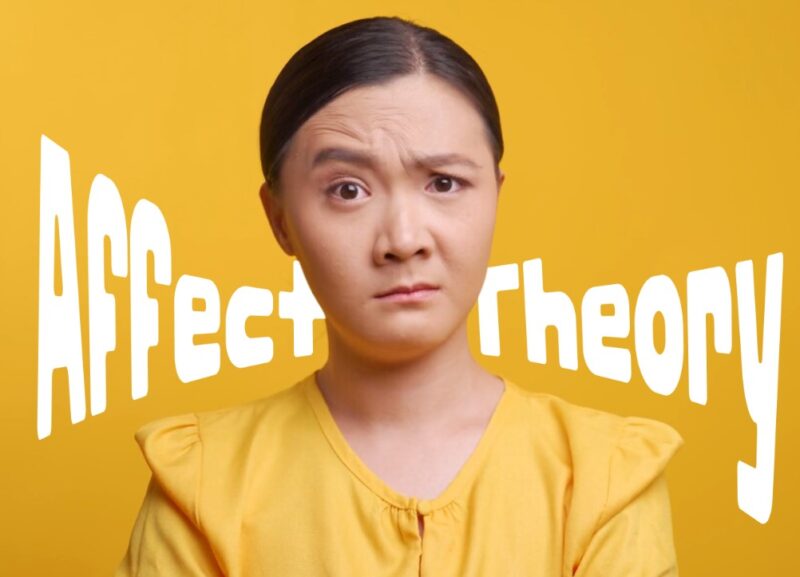In the vast realm of human emotions, affect theory stands as a beacon, illuminating the intricate nuances of our feelings and their manifestations. This theory, which has been the subject of extensive research and debate across various academic disciplines, offers a comprehensive framework for understanding the physiological, social, and interpersonal dimensions of emotions, often referred to as ‘affects’.
Historical Roots
The origins of affect theory can be traced back to the pioneering work of psychologist Silvan Tomkins. In his groundbreaking book, “Affect Imagery Consciousness” (1962), Tomkins introduced the concept of affect as the biological component of emotion.
He posited that these emotions are hard-wired into our genetic makeup, acting as preprogrammed mechanisms that, when activated, follow a specific biological pattern. However, as we grow and mature, our emotional experiences evolve, becoming a complex interplay between this innate mechanism and a web of interacting ideo-affective formations.
The Spectrum of Primary Affects
Tomkins identified a spectrum of nine primary affects, each with its unique characteristics and physiological expressions:
Positive Affects:
- Enjoyment/Joy: A radiant smile is its hallmark. This affect emerges from success and carries an impulse to share joyous moments.
- Interest/Excitement: Characterized by focused attention, it arises from novel situations, urging us to explore and learn.
- Neutral Affect: Surprise/Startle, A brief, sharp reaction to unexpected events, resetting our impulses.
- Negative Affects: Anger/Rage, A fiery response to perceived threats, it prepares us for confrontation.
- Disgust: A visceral reaction to repulsion, urging us to distance ourselves from the source.
- Dissmell: A nuanced form of disgust, specifically triggered by unpleasant odors.
- Distress/Anguish: A heart-wrenching response to loss or pain, often leading to mourning.
- Fear/Terror: A primal reaction to imminent danger, it readies us for flight or fight.
- Shame/Humiliation: A deeply introspective affect, it arises from personal failures and prompts self-reflection.
Affect Theory’s Foray into Critical Theory
The tendrils of affect theory have reached the domain of critical theory, with scholars like Eve Sedgwick and Lauren Berlant championing its cause. These luminaries, along with a host of others, have underscored the pivotal role of affect in sculpting societal norms, gender roles, and collective identities. In this context, affect emerges as a potent force, shaping contemporary political landscapes and the very fabric of capitalist systems.
The Power of Nonverbal Communication
At the heart of affect theory lies the profound significance of nonverbal communication, especially in intimate relationships. Tomkins introduced the concept of affective resonance, a phenomenon where individuals instinctively mirror the emotions displayed by others. This mirroring, believed to be the bedrock of human communication, predates even the advent of language.
The Controversies Surrounding Affect Theory

The academic world thrives on debate, and theories, no matter how groundbreaking, often find themselves at the center of intellectual contention. Affect theory, despite its significant contributions to understanding human emotions, has not been immune to such scrutiny. The controversies surrounding it offer a fascinating glimpse into the challenges and complexities of academic discourse.
Broader Implications in Art and Literature: Ruth Leys, a prominent figure in the academic world, has been one of the most vocal critics of affect theory, particularly concerning its implications for art and literature. Leys argues that the theory’s emphasis on pre-cognitive and non-conscious emotions could potentially undermine the rich tapestry of conscious thought, reflection, and interpretation that is integral to artistic and literary endeavors. By focusing predominantly on the biological and innate aspects of emotions, there’s a risk of sidelining the cultural, historical, and personal contexts that shape artistic expression and literary narratives.
Overlapping with Established Theories: Another point of contention is the perceived overlap of affect theory with other well-established theories, particularly poststructuralism. Critics argue that affect theory, in many of its tenets, echoes the principles of poststructuralist thought, raising questions about its originality and distinctiveness. The boundaries between these theories, some argue, are blurred, leading to potential redundancies and confusions in academic discourse.
Perceived Imprecision: The very nature of affect theory, with its focus on the non-verbal, non-conscious, and often intangible aspects of emotions, has led to critiques about its precision. Some scholars believe that the language of affect theory, replete with terms like “intensity,” “resonance,” and “flux,” lacks the rigor and clarity needed for robust academic discourse. This perceived imprecision has led to concerns about the theory’s applicability and its potential for subjective interpretations.
Cultural Construct vs. Biological Imperative: Another debate centers on the balance between cultural constructs and biological imperatives in affect theory. While Tomkins and other proponents emphasize the biological roots of emotions, critics like Jason Josephson Storm argue that affects are significantly shaped by cultural and societal factors. This debate underscores the age-old nature versus nurture argument, with affect theory caught in the crossfire.
FAQs

What is Affect Theory?
Affect theory is a framework that delves into the intricate nuances of human emotions, feelings, and their manifestations. It seeks to understand the physiological, social, and interpersonal dimensions of emotions, often referred to as ‘affects’.
How does Affect Theory differ from other theories on emotions?
Affect theory emphasizes the biological and innate aspects of emotions, viewing them as preprogrammed mechanisms ingrained in our genetic makeup. While it acknowledges the influence of personal and societal factors, it stands apart in its focus on the non-verbal, non-conscious, and often intangible aspects of emotions.
What concerns has Ruth Leys raised about Affect Theory?
Ruth Leys has voiced concerns about the broader implications of affect theory, especially in the realms of art and literature. She believes that the theory’s emphasis on pre-cognitive and non-conscious emotions could potentially undermine the conscious thought, reflection, and interpretation integral to artistic and literary endeavors.
How does Affect Theory overlap with poststructuralism?
Critics argue that many tenets of affect theory echo the principles of poststructuralist thought. This perceived overlap has raised questions about the originality and distinctiveness of affect theory, with some believing that the boundaries between these theories are blurred.
Are there criticisms about the precision of Affect Theory?
Yes, some scholars believe that the language of affect theory lacks the rigor and clarity needed for robust academic discourse. The theory’s focus on intangible aspects of emotions has led to concerns about its applicability and potential for subjective interpretations.
Conclusion
Affect theory, a beacon in the realm of human emotions, provides a comprehensive lens through which we can explore the multifaceted nature of our feelings and their manifestations. Its rich tapestry of insights, woven from decades of research and observation, paints a panoramic picture of the human emotional landscape, capturing its nuances, ebbs, and flows.
Tracing its historical lineage, we find ourselves journeying back to the pioneering work of Silvan Tomkins. His foundational contributions laid the groundwork for our understanding of affects, offering a structured approach to deciphering the myriad emotions that color our daily lives. Tomkins’ exploration of the biological roots of emotions, combined with his identification of primary affects, has provided scholars and enthusiasts alike with a robust framework to delve deeper into the world of human emotions.
But the reach of affect theory extends far beyond its historical origins. In the contemporary era, its implications resonate profoundly in diverse fields such as critical theory and interpersonal communication. Scholars, philosophers, and thinkers have harnessed the principles of affect theory to dissect societal norms, challenge established paradigms, and understand the intricate dance of nonverbal communication in intimate relationships. The theory’s emphasis on affective resonance, for instance, underscores the primal human instinct to mirror and reciprocate emotions, highlighting the deep-seated interconnectedness that binds us all.
Furthermore, affect theory serves as a testament to the sheer depth and complexity of human emotions. It reminds us that our feelings, whether fleeting or enduring, are not mere reactions but are deeply embedded in our biology, psyche, and social interactions. They shape our perceptions, influence our decisions, and, in many ways, define our very essence.
In wrapping up, affect theory stands as a monumental pillar in the study of emotions, offering both a historical perspective and a forward-looking vision. It beckons us to embrace the vastness of our emotional spectrum, to understand its intricacies, and to appreciate the profound impact it has on our lives and the world around us.
